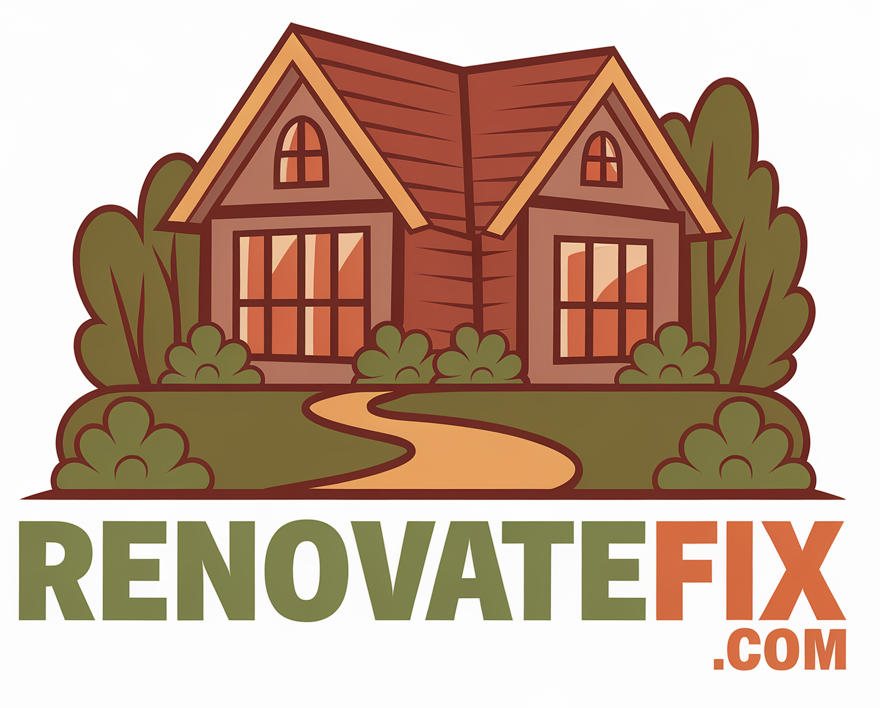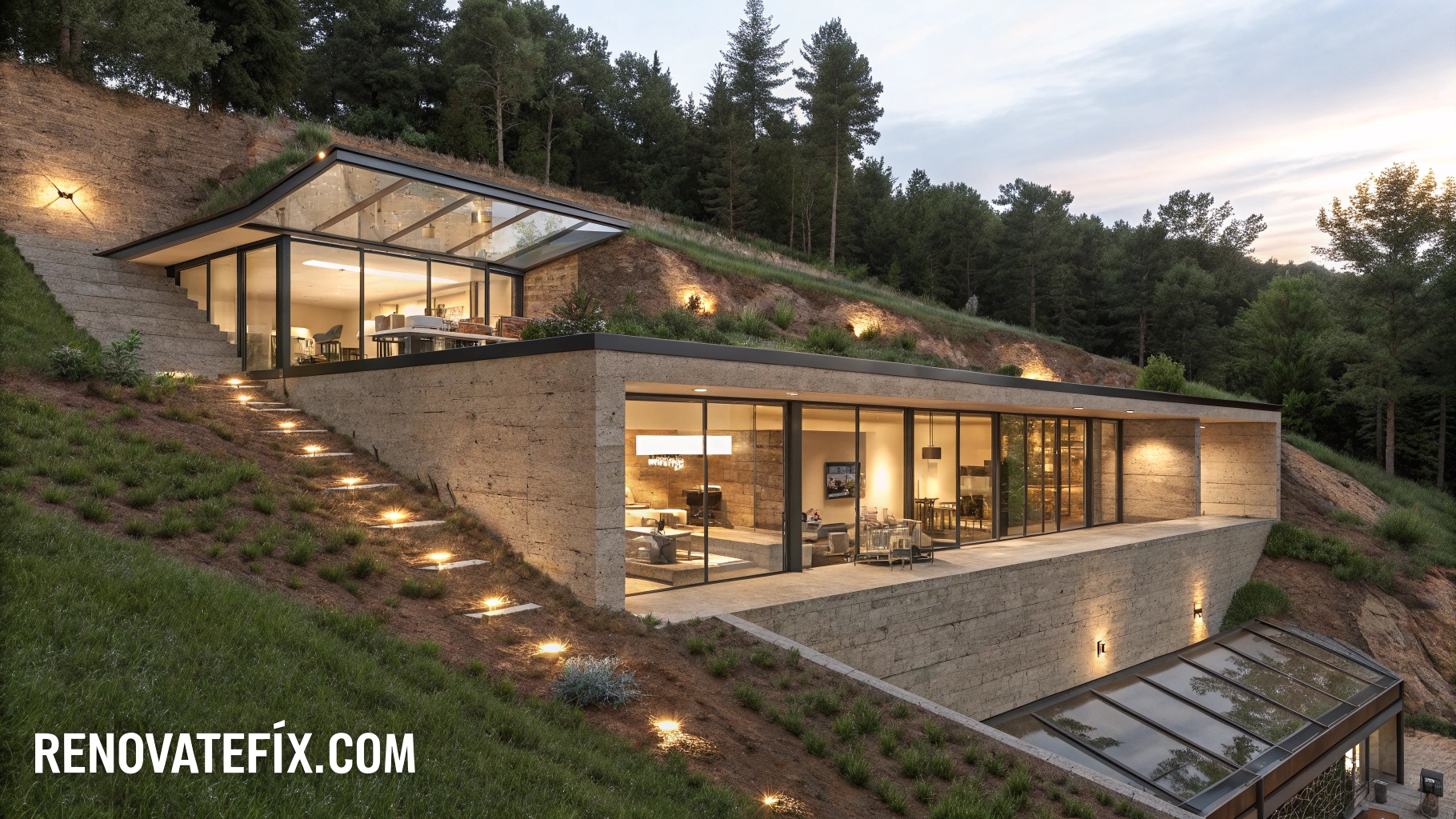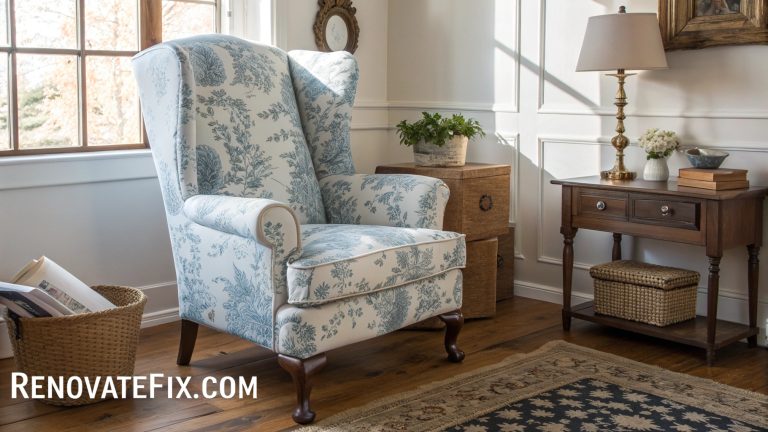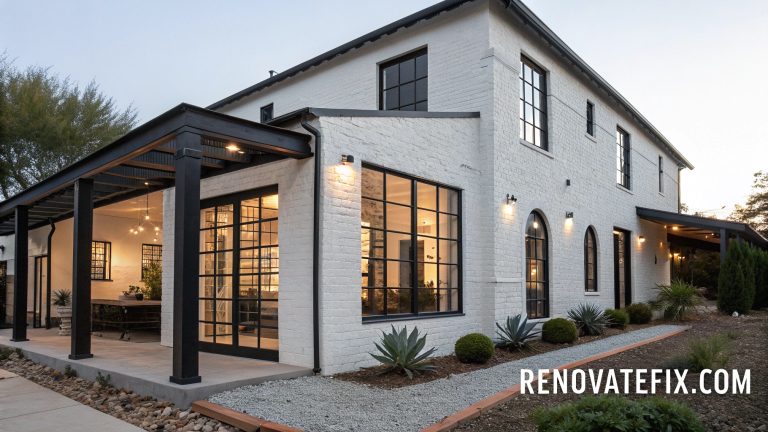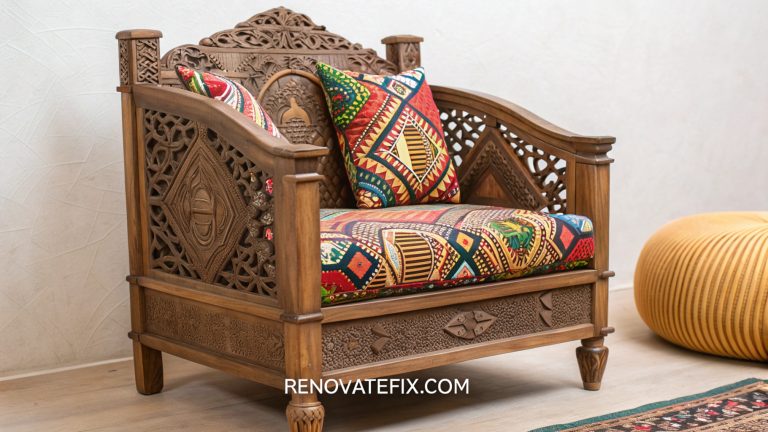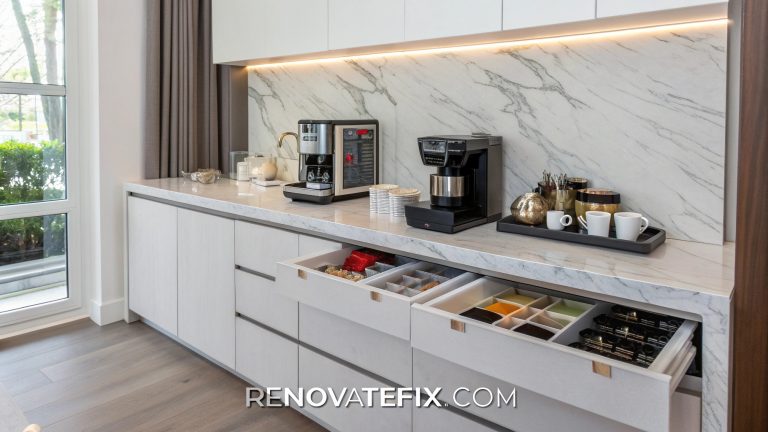15 Innovative Underground Homes Hidden Ideas
Underground homes have fascinated humanity since ancient times, providing natural insulation, protection from harsh weather, and seamless integration with surrounding landscapes.
These subterranean dwellings offer sustainable living solutions while maintaining privacy and reducing environmental impact.
From partially buried structures to fully concealed habitats, earth-sheltered architecture presents countless possibilities for innovative, energy-efficient housing.
This comprehensive guide explores fifteen remarkable concepts for underground homes that push boundaries in design, functionality, and aesthetic appeal.
Whether you’re an architecture enthusiast, an eco-conscious homeowner, or simply curious about alternative living spaces, these distinctive ideas showcase how underground dwellings can combine practicality with extraordinary vision.
15 Underground Homes Hidden Ideas
1. Hillside Glass Facade
A dwelling carved into sloping terrain features an expansive glass front wall that floods interior spaces with natural light while maintaining ground-level insulation benefits from three sides.
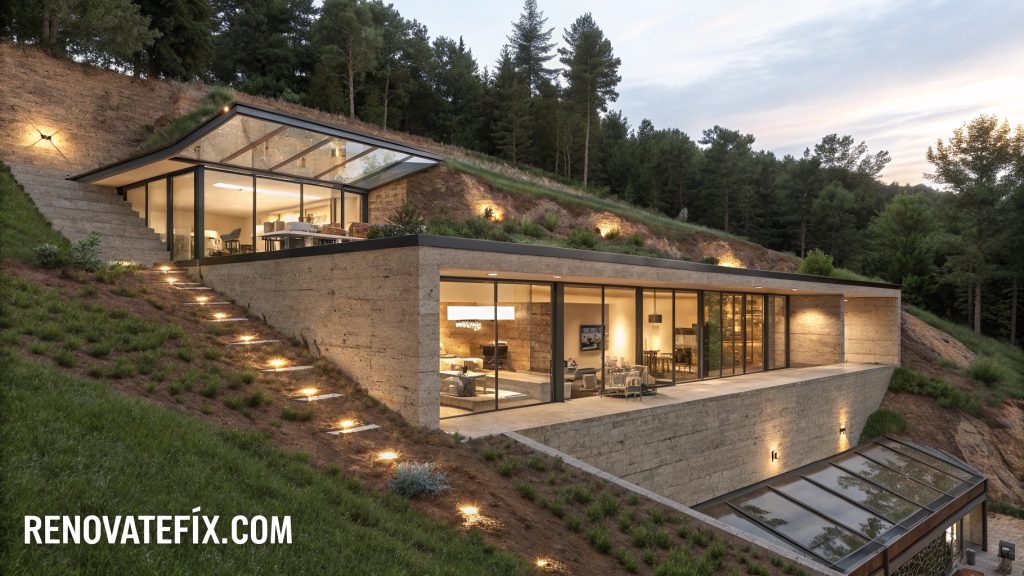
Behind this dramatic transparent barrier, multi-level living areas cascade down following natural topography, creating dynamic sight lines throughout various rooms.
Underground skylights positioned strategically along ceiling planes introduce additional daylight beams, enhancing spatial perception without sacrificing energy efficiency.
2. Circular Courtyard Center
An innovative round home arrangement built below grade level surrounds a central open-air courtyard, allowing sunshine access while maintaining privacy from outside observers.
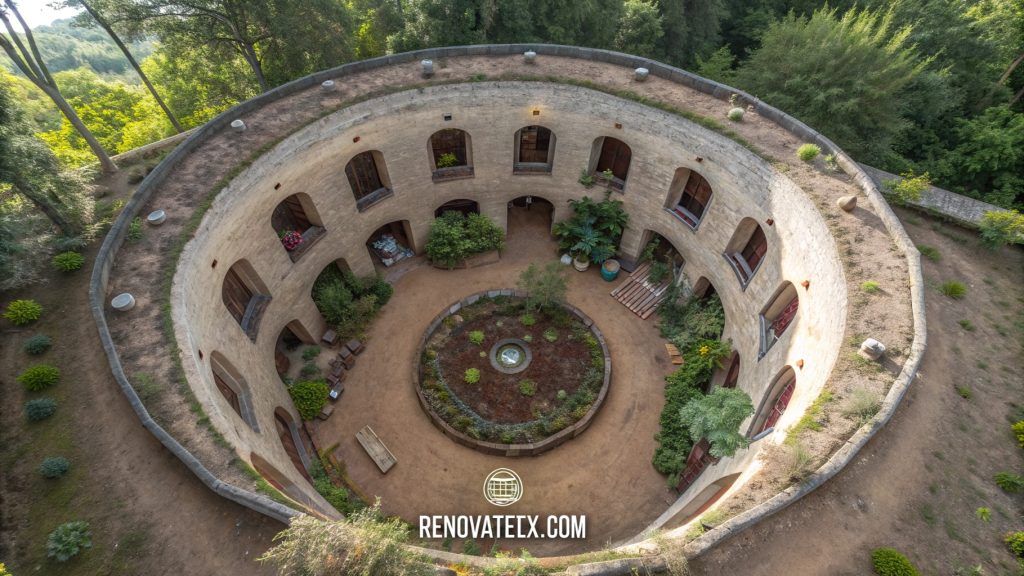
Each room radiates outward from this circular nucleus, with curved walls enhancing acoustic properties throughout living spaces.
Garden elements occupy courtyard center, bringing nature directly into daily life while providing passive cooling through evapotranspiration during summer months.
3. Terraced Mountain Insertion
Multiple levels carved horizontally into mountainsides create stepped living platforms following natural contours, each floor enjoying panoramic views through partially concealed openings.
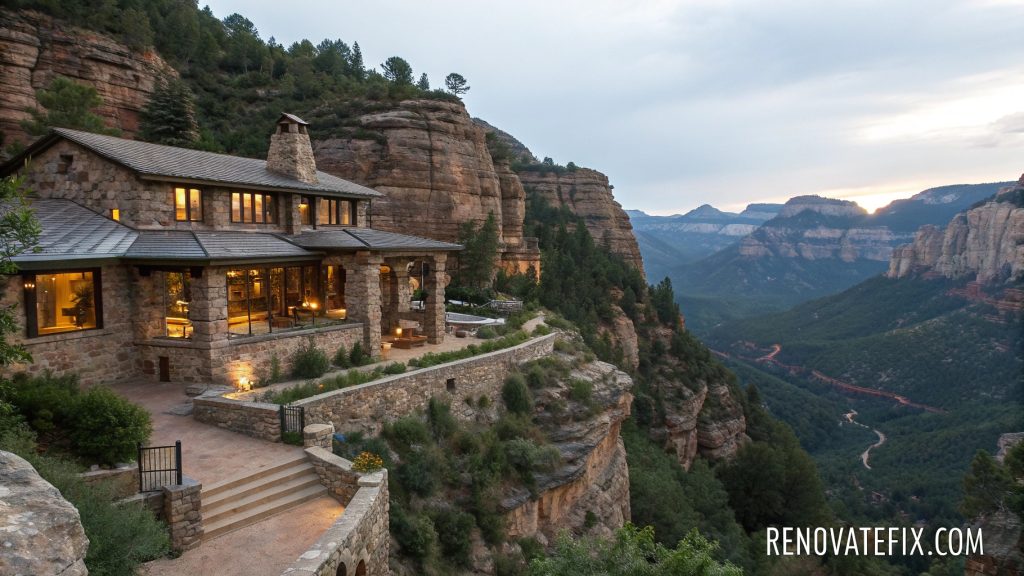
Stone harvested during excavation forms structural elements throughout, seamlessly blending built environment with mountain geology.
Living roofs atop each terrace support native vegetation, making structure nearly invisible from above while providing additional outdoor recreation space.
4. Water-Adjacent Cave Dwelling
Built alongside underwater features, this concept leverages aquatic environments through thick glass walls separating living quarters from lakes, rivers or ocean waters.
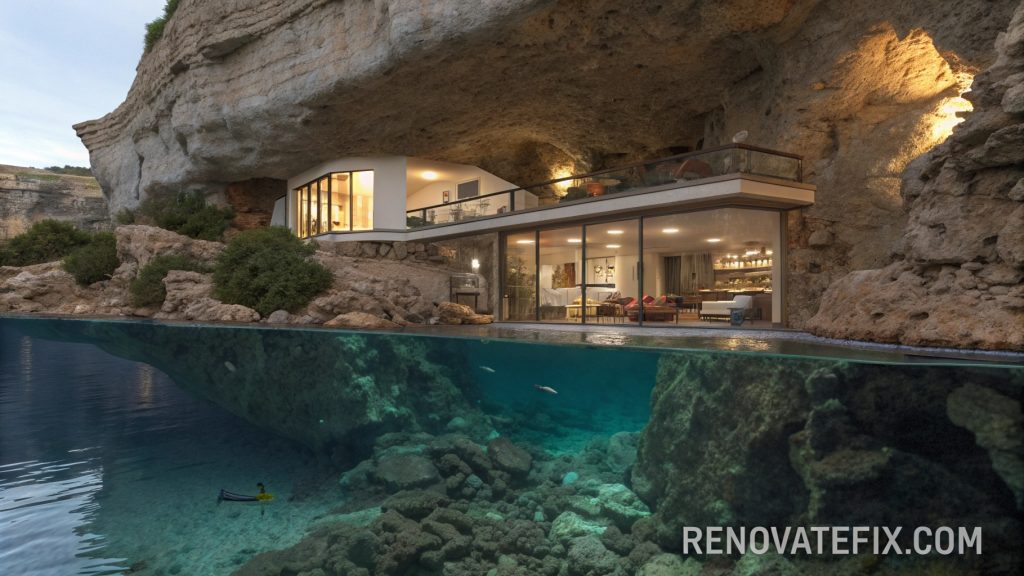
Submerged viewing areas offer extraordinary vistas of marine ecosystems while water provides excellent thermal mass properties.
Spaces carved into adjacent shoreline cliffs utilize natural cave formations augmented by modern construction techniques, creating harmony between geological features and human habitation.
5. Invisible Prairie House
Completely buried beneath prairie grasslands, this residence reveals itself only through minimal surface interventions – small bermed openings capturing sunlight while maintaining vast uninterrupted meadow appearance.
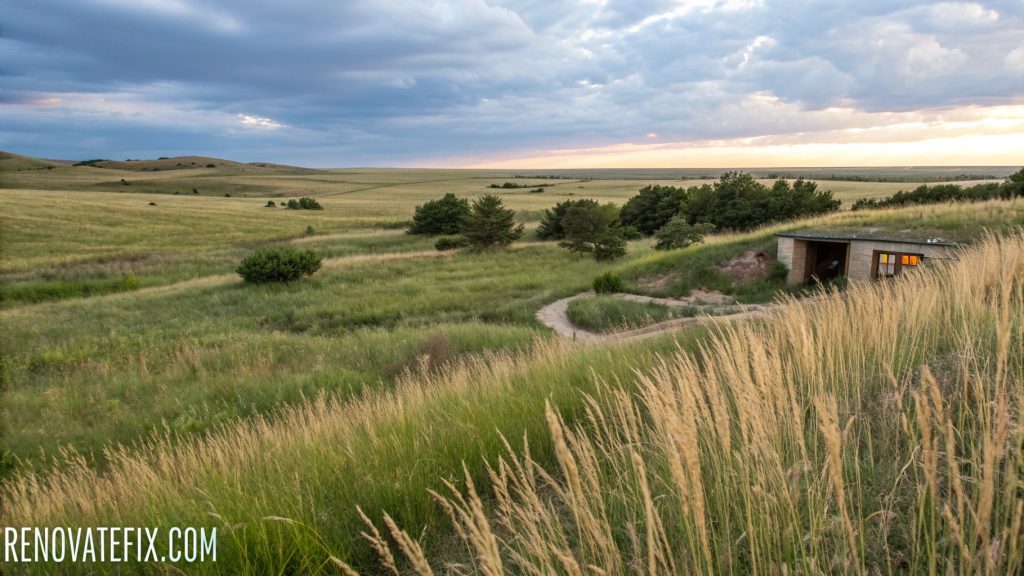
Beneath ground level, generous living spaces branch outward from central atrium filled with prairie grasses growing through specialized skylights.
Natural ventilation systems utilize temperature differentials to circulate fresh air throughout buried chambers without mechanical assistance.
6. Forest Floor Integration
Nestled beneath woodland canopy, this dwelling mimics natural forest floor topography with undulating green roof supporting native undergrowth vegetation and wildlife habitat.
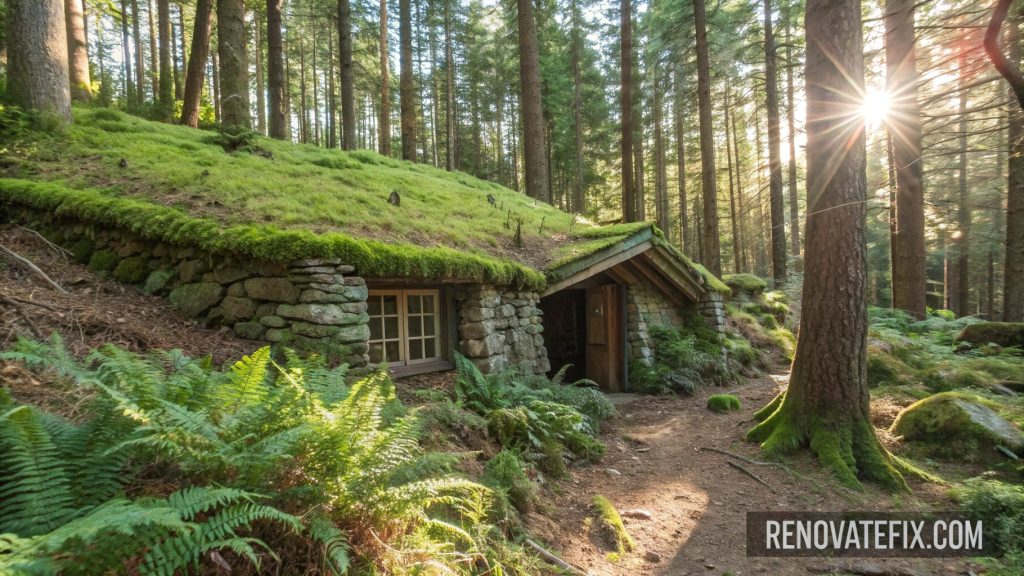
Access points blend seamlessly with surrounding landscape elements – fallen logs, stone formations, natural clearings – concealing entryways from casual observation.
Interior spaces follow organic shapes reminiscent of root systems, creating flowing connections between functional areas.
7. Desert Oasis Respite
Subterranean chambers beneath arid landscapes provide escape from extreme heat while conserving precious water resources through condensation collection systems.

Cool underground temperatures eliminate need for mechanical cooling systems during scorching days. Strategically placed light wells capture morning sun while avoiding afternoon heat gain, creating gentle illumination throughout different daily cycles.
Midnight blue reflecting pools gather harvested moisture, serving both practical needs and aesthetic purposes.
8. Vertical Earth Burrow
Unlike traditional horizontal underground designs, this concept drills vertically downward, creating multi-story living spaces resembling natural animal burrows.

Various floors connect through spiral staircases wrapped around central light well extending from surface to lowest level.
Each descending floor serves distinct functions – social gatherings above, private quarters below – with increasing sense of security and separation from outside world.
9. Agricultural Rooftop Camouflage
Productive farmland conceals extensive living space below, with working fields serving dual purpose as functional roof and visual disguise.

Below grade, generous ceiling heights and expansive rooms defy stereotypical bunker associations through clever light harvesting systems.
Structural supports double as growing columns for hydroponic vegetable production, integrating food systems directly into architectural framework while maximizing available underground footage.
10. Cliff-Face Puncture
Dramatic coastal cliffs house horizontally tunneled living spaces with strategic openings framing ocean panoramas.
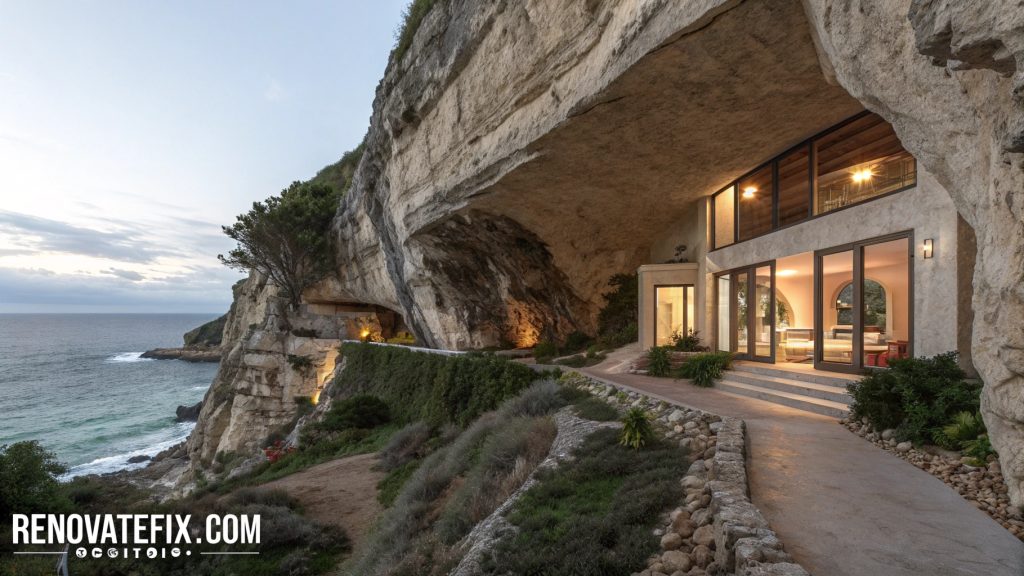
Natural ventilation flows through front-facing ports while rear chambers maintain consistent temperatures regardless of external weather conditions.
Wave sounds reverberate throughout interior spaces, creating continuous connection with marine environment despite substantial protective barrier between inhabitants and elements.
11. Snow-Covered Winter Haven
Built beneath snow accumulation zones, this dwelling remains completely buried during winter months, utilizing snow’s insulating properties for maximum thermal efficiency.

During warmer seasons, retractable roof sections open to sky, transforming enclosed spaces into partially open-air environments.
Specialized materials throughout enable quick transition between sealed winter configuration and breathable summer arrangement without compromising structural integrity.
12. Urban Basement Expansion
Beneath existing city buildings, vast underground networks connect multiple properties through repurposed utility tunnels, creating community spaces invisible from street level.

Historical foundation walls become decorative elements within new subterranean architecture, preserving urban heritage while enabling density increases without changing city skylines.
Natural light reaches deepest areas through fiber optic channels, eliminating claustrophobic associations typically linked with basement environments.
13. Riverside Bank Dwelling
Homes built directly into elevated riverbanks provide protection from flooding while maintaining immediate water access through specialized waterproof entrances.
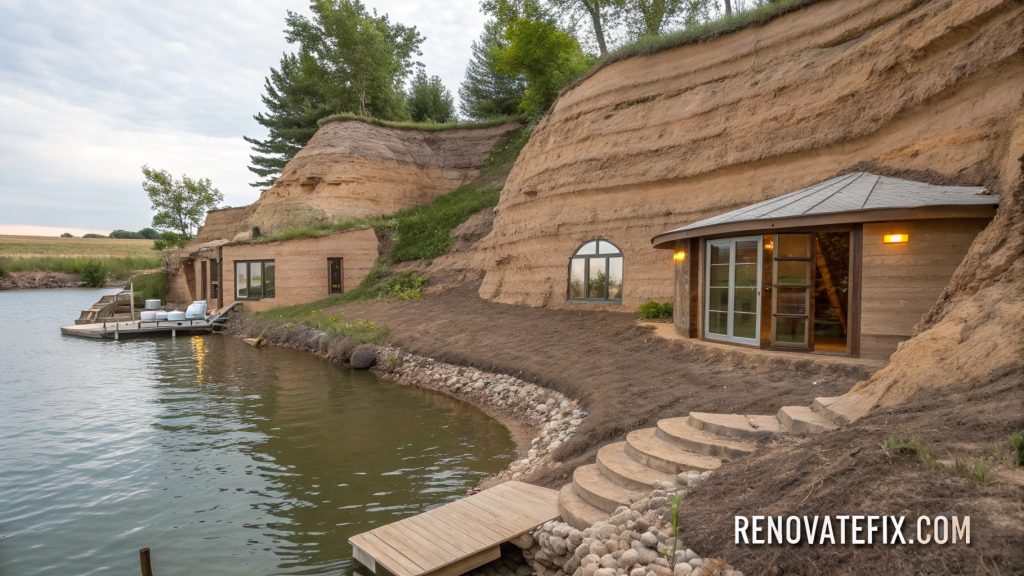
Living spaces follow natural sediment layers, creating striped interior wall patterns highlighting geological history.
Passive cooling systems utilize river proximity for temperature regulation, drawing cool air through filtered intake chambers during warm periods while maintaining barrier against moisture infiltration.
14. Volcanic Crater Residence
Dormant volcanic craters provide unique opportunities for circular homes nestled within natural depressions, benefiting from geothermal properties while offering dramatic views across surrounding landscapes.
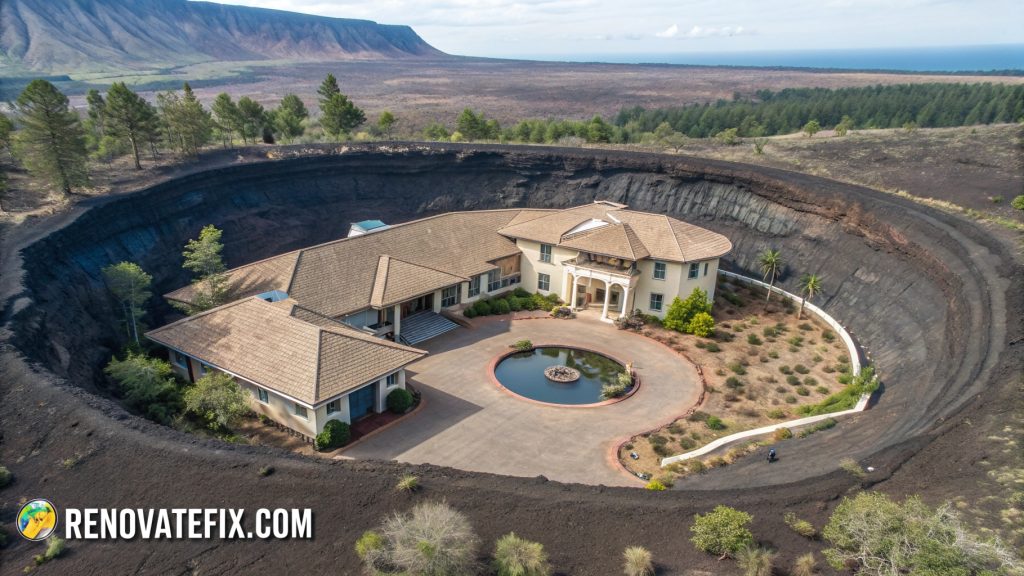
Radial floor plans maximize spatial efficiency with communal areas occupying central points.
Passive ventilation systems harness atmospheric pressure differences between crater rim and floor, creating natural air circulation throughout living spaces.
15. Modular Tunnel System
Prefabricated curved sections connect to form customizable underground networks, allowing phased construction or expansion as family needs evolve.
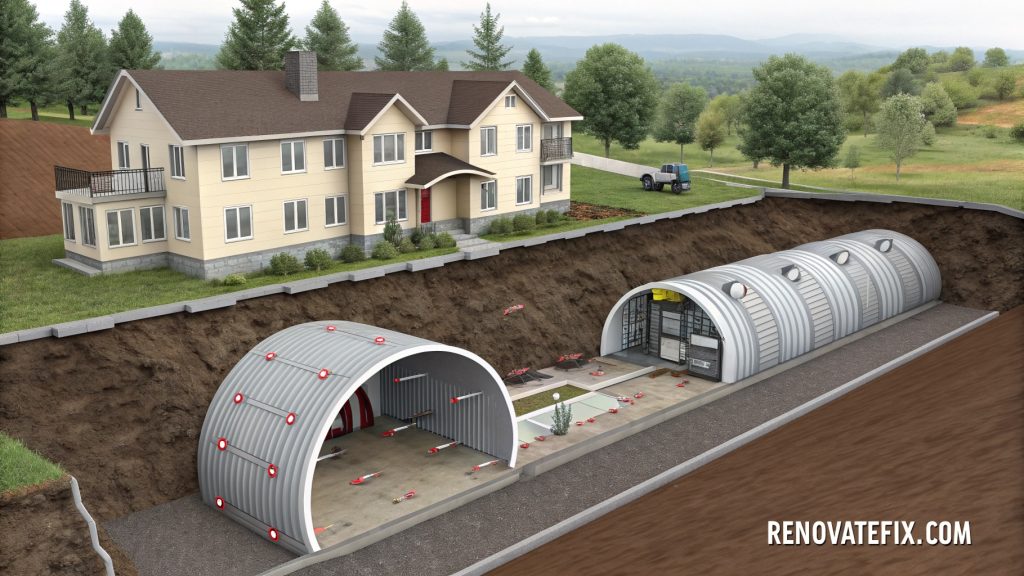
Each segment serves specific functions – sleeping quarters, cooking spaces, relaxation areas – while maintaining consistent aesthetic throughout.
Construction process minimizes site disruption through precision excavation matched exactly to module dimensions, reducing waste material while accelerating installation timeline.
Conclusion
Underground homes represent fascinating opportunities for sustainable architecture that harmonizes with natural environments while providing unique living experiences.
These fifteen innovative concepts demonstrate how subterranean dwellings can transcend traditional limitations, offering privacy, energy efficiency, and aesthetic appeal while minimizing environmental footprints.
From hillside integrations to urban basement expansions, each approach addresses specific site conditions and owner preferences through creative solutions that respect surrounding landscapes.
By working with rather than against natural topography, future homeowners can discover harmonious relationships between built environments and earth itself, creating dwellings that stand apart precisely because they blend in.
